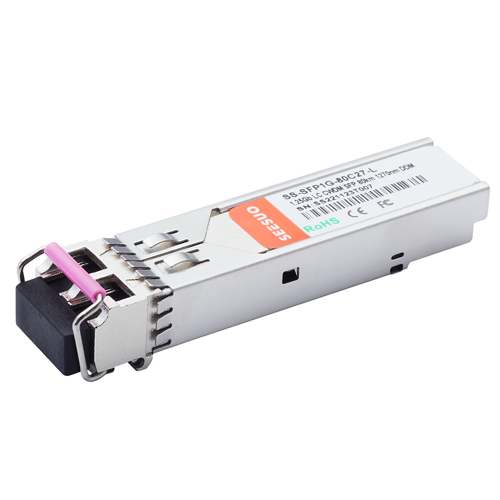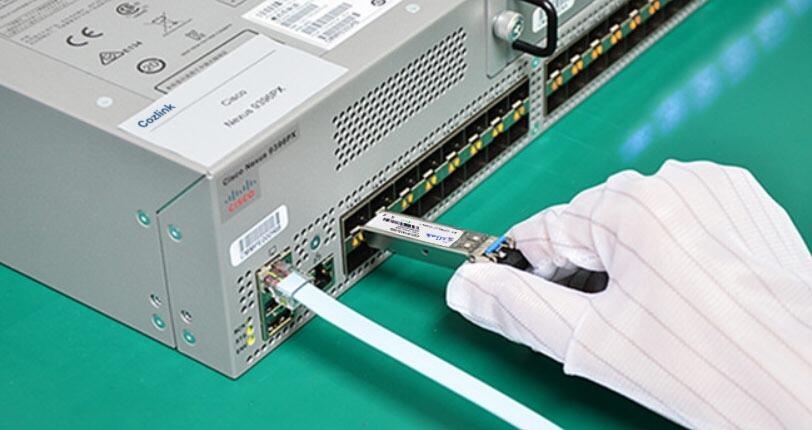- Related articles
- All Cisco ONS-SE-GE-BXD's information (List price, Specs, Datasheet PDF, Compatibility mat
- All Cisco AJ906A's information (Specs, Datasheet PDF)
- Optical Transceivers for Cisco WS-C3650-48TQ-S Switch
- Optical Transceivers for Cisco WS-C2960+48TC-S Switch
- Optical Transceivers for Cisco SF300-24MP-K9-UK Switch
- Optical Transceivers for Cisco SG500-52MP-K9-G5 Switch
- All Cisco DWDM-X2-30.33's information (List price, Specs, Datasheet PDF, Compatibility mat
- All Cisco ONS-SI-155-L2's information (List price, Specs, Datasheet PDF, Compatibility mat
- Fiber Optic Solutions for Cisco C3KX-NM-10G Module
- Applicable to 40GBASE-LRL4 Standard Optical Transceiver Models

Cisco devices can only support Cisco brand optical module. While other brands optical modules absolutely can’t be supported. If you obstinately plug in the other optical modules into the Cisco port, information like “Unsupport” or “Unknown” will be displayed. The log shows one or several of the following circumstances:
PM_SCP-SP-3-TRANSCEIVER_UNSUPPORTED: Unsupported transceiver in LAN port
PHY-4-CHECK_SUM_FAILED: SFP EEPROM data check sum failed for SFP interface Gi1/0/25
GBIC_SECURITY_CRYPT-4-VN_DATA_CRC_ERROR: GBIC in port Gi1/0/25 has bad crc
PM-4-ERR_DISABLE: GBIC-invalid error detected on Gi1/0/25, putting Gi1/0/25 in err-disable state
Why does this happen?
Cisco SFP security key mechanism prevents the use of non-Cisco SFP to ensure quality and compatibility. Each SFP is encoded using extraordinary software key. If a SFP module does not contain a valid key, then the port will be closed when the SFP inserted into Cisco switch. And the port will not send or receive any data packet.

Then how to solve the Cisco optical module security key mechanism?
- Enter the global configuration mode;
- Play is hidden on the command (Do not press the “tab” key);
- Service unsupported-transceiver no errdisable detect cause gbic-invalid speed non-negotiate;
- Save configuration;
- Plug in optical module;
- Finish.
In this way, switch will not go to check the serial number of the GBIC. Then the user can put the third-party GBIC or SFP into the machine to make the network operate. Of course, based on the principle of “encouraging”, the previous instruction is “hidden version” of instruction. If you try few times and see there is absolutely no command list inside the unsupported transceiver after finishing the instructions. What’s worse, the machine would never accept as you press “tab”. I’m afraid you should better not come to the mysterious GBIC or SFP.
Cisco company warning: When Cisco determines that a fault or defect can be traced to the use of third-party transceivers installed by a customer or reseller, then, at Cisco’s discretion, Cisco may withhold support under warranty or a Cisco support program. In the course of providing support for a Cisco networking product, Cisco may require that the end user install Cisco transceivers if Cisco determines that removing third-party parts will assist Cisco in diagnosing the cause of a support issue.

So, you should choose a compatible module. Cozlink.COM offers customers a wide variety of fiber optic transceiver for data center, enterprise wiring closet, and service provider transport applications. Cozlink is an professional manufacturer & supplier of fiber transceivers. All of our fiber optic transceivers are tested in-house prior to shipping to guarantee that they will arrive in perfect physical and working condition. We guarantee our fiber transceivers to work in your system and all of our fiber transceivers come with a lifetime advance replacement warranty.
Cryptographic Key/CSP Management
The module securely administers both cryptographic keys and other critical security parameters such as passwords. The tamper evidence seals provide physical protection for all keys. All keys are also protected by the password-protection on the Crypto Officer role login, and can be zeroized by the Crypto Officer. All zeroization consists of overwriting the memory that stored the key.
The module is in the approved mode of operation only when FIPS 140-2 approved algorithms are used (except DH and RSA key transport which are allowed in the approved mode for key establishment despite being non-approved). All Diffie-Hellman (DH)/ECDH keys agreed upon for individual tunnels are direactly associated with that specific connection. RSA Public keys are entered into the modules using digital certificates which contain relevant data such as the name of the public key's owner, which associates the key with the correct entity. All other keys are associated with the user/role that entered them.
Cryptographic Module Ports and Interfaces
The module provides a number of physical and logical interfaces to the device, and the physical interfaces provided by the module are mapped to the following FIPS 140-2 defined logical interfaces: data input, data output, control input, status output, and power. The module provides no power to external devices and takes in its power through normal power input/cord. The following table lists all possible logical/physical interface configurations.
| Physical Interfaces | FIPS 140-2 Logical Interfaces |
Encryption Card:
Controller Card:
Line Card:
| Data Input Interface |
Encryption Card:
Controller Card:
Line Card:
| Data Input Interface |
Controller Card:
| Control Input Interface |
Encryption Card:
LED Controller Card:
| Status Output Interface |





































































